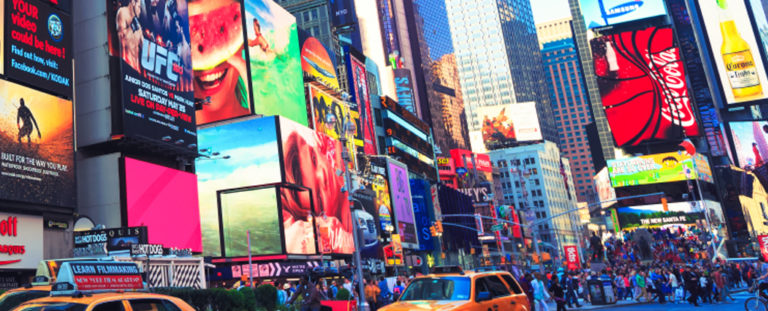5 ways to improve your digital marketing mix
Published: December 30, 2019
The digital marketing landscape calls for agility to keep up with trends and evolving technology. Just a few years ago, making a post on your social media accounts was enough, but without a genuine customer interaction, your brand might not be making the footprints needed for success. As we look forward to a new year, it is crucial to analyze ways to improve your digital campaign planning and reap the most from your digital marketing mix.
1. Offer an omnichannel experience
Consumers now operate on multiple integrated devices to conduct daily tasks. As an advertiser, the idea is to provide an integrated customer experience on multiple platforms, which is why marketers should always consider omnichannel marketing. Whether the consumer is shopping in a physical store, engaging through Facebook, or operating on a mobile app, their experience should be consistent.
To do this, it’s important to walk in the consumer’s shoes by going through the entire process, from communicating, to ordering, and then purchasing your products and services. To further enhance the customer experience, utilize the power of big data when analyzing the process and selecting the appropriate advertising channels to deliver your message. The ultimate goal is to enhance your integrated campaigns and increase your ROAS.
It is also no secret that personalization is the key to persuasion. Your message should cater to your audience. A customer that has previously purchased your product will have different intentions from another that is only browsing your catalog. For a repeat customer, an email campaign may include recommending complementary products, whereas the focus for a new customer would be convincing them that the purchase is worth their money.
2. Embrace Programmatic Advertising
Programmatic technology is creating a buzz in the digital out of home space and with good reason. Only a decade ago, it was impossible to imagine real-time purchases on billboard advertising. Before the use of online technology, marketers and brands relied on people to purchase billboard space. Technology is now replacing some of the menial tasks performed by humans and consequently reducing inefficiencies.
The Kylie Skin programmatic campaign is an excellent example of how powerful programmatic out-of-home advertising can be. The brand targeted 4,300 billboards and 1,500 video screens in shopping malls across 1,100 cities. In earlier times, it would have taken months to have so many screens displaying the same message. DOOH sales in the United States have been continuously growing. Statistics from MagnaGlobal show that DOOH sales have been growing by 16% per year in the last five years. With OOH solidifying itself as a reliable advertising medium, businesses should realign accordingly.
3. Leverage Location for Better Marketing
Leveraging location for geo-targeted ads will ensure that you reach the right audience. Search engines such as Google have one of the most extensive location services that you can leverage to attract more consumers. In some of the latest developments, Google not only helps you target audiences in your region but also those regularly spotted in your area. This feature now includes people who do regular searches about the area, even if they were not physically there.
Location-based advertising is especially useful in out of home advertising. While digital media platforms have taken the lead in recent years, out-of-home advertising is catching up. How? Consumers spend 70% of their day away from home. The new wave of digital out of home advertising is changing the game by using mobile location data to retarget ads to specific audiences, at the time they are by a digital billboard or screen.
Imagine a world where billboards display ads based on the individuals moving past them. With current programmatic out of home technology, OOH ads can be bought and displayed in real-time. It is catchy, bold, and immune to ad blockers.
4. Stay Relevant
Search platforms support both audio and visual content. Staying ahead of the curve means that you need to optimize your content for both senses. Statistics now show that 1 in 5 adults use mobile voice search daily. Also, 13% of households in the United States own a smart speaker, with the number expected to spike to 55% by 2022.
What does this mean for advertisers? Fewer consumers will spend their time on screens. If more people focus on speaking rather than reading, appearing on the first page will not matter. As your consumers invest more in devices such as Google Home or Alexa, you need to redefine your content to meet voice search needs.
Adapting SEO for voice searches will differ from typing searches. Typically, voice searches are more prolonged than typed searches and are more conversational. For example, instead of typing "Restaurants near me," a user is more likely to say, "What are the best restaurants close to me?". Since the searches occur as questions, you need to provide direct answers, which means the content needs to include more natural long tail keywords.
Data from The Internet Trends Reports found that 22% of people use voice search to find information on local places and products. The content, therefore, needs to focus on answering phrases such as "near me," "close to me," or be region-specific, for example, "Near Times Square."
5. Maintain the Balance Between Quantity and Quality
With several marketing platforms to focus on, businesses might be tempted to pick quantity over quality. After all, casting a bigger net may increase the response. Research by Hubspot showed that companies with more than 11 blog posts per month received higher traffic than those with less than 11 posts. Quantity is significant, but so is quality.
Ultimately, search engines such as Google want to place quality content at a higher ranking because it solves their users' needs. To reap long-term benefits, you need to create quality content. Stuffing keywords, repeating content, and going for blackhat backlinks will damage your website's ranking.
In conclusion, keeping the right blend of marketing strategies is essential in promoting your brand. Try to provide an omni-channel experience while delivering a targeted and relevant message to your audience. Exploring advertising mediums such as out-of-home will only help boost campaign performance. To learn more about digital out of home, email our team at Sales@adomni.com
To get the latest updates on out of home advertising, digital marketing and technology, follow us on:
Or sign up for our newsletter.


